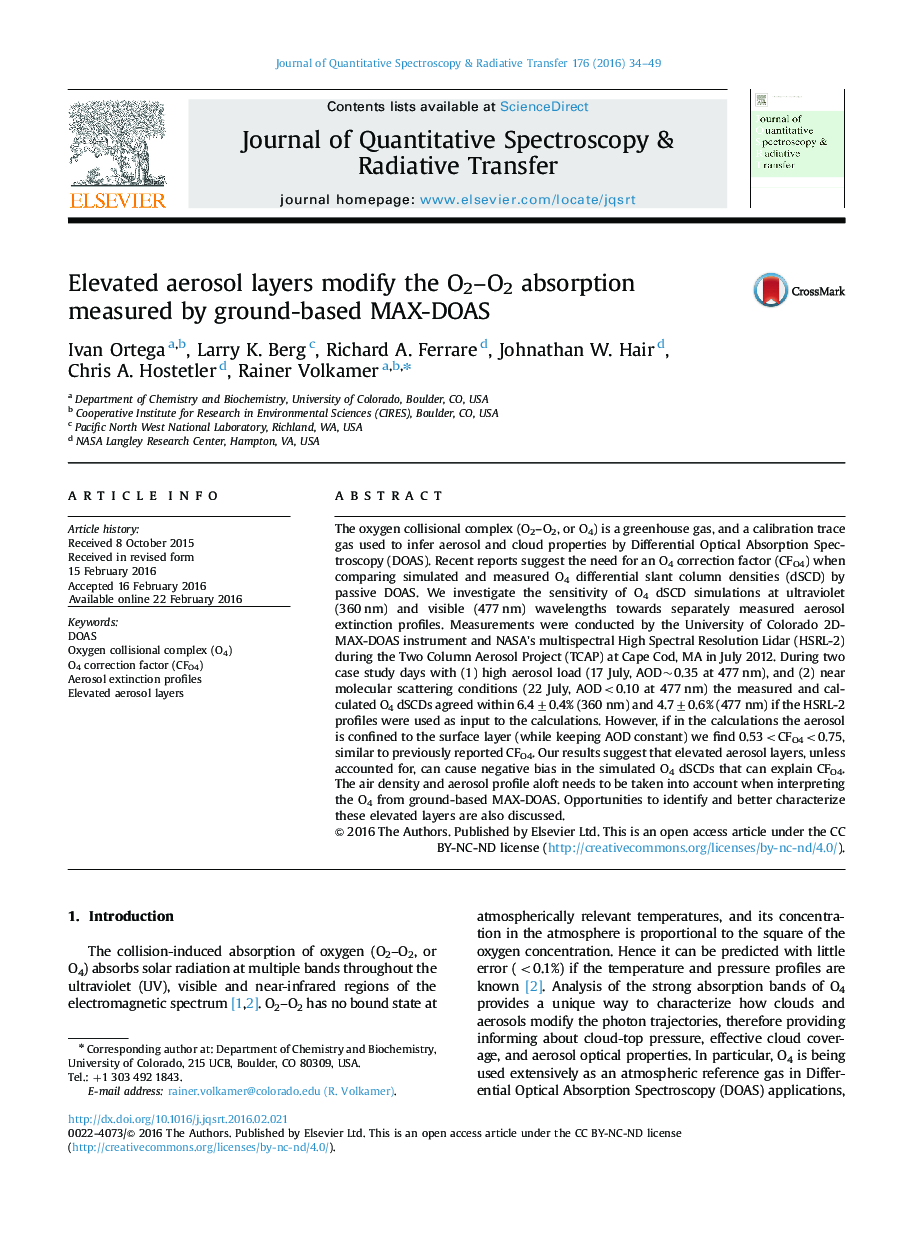| Article ID | Journal | Published Year | Pages | File Type |
|---|---|---|---|---|
| 5427626 | Journal of Quantitative Spectroscopy and Radiative Transfer | 2016 | 16 Pages |
â¢O2-O2 absorption is modified by elevated aerosol layers and fully explained.â¢Predicting O2-O2 absorption is sensitive to air density and aerosol profile assumptions.â¢Elevated aerosol layers can cause negative bias in the simulated O2-O2 dSCDs.â¢Ground-based MAX-DOAS does not need an O2-O2 correction factor (CFO4) during TCAP.â¢Ground-based MAX-DOAS is sensitive to detect elevated aerosol layers.
The oxygen collisional complex (O2-O2, or O4) is a greenhouse gas, and a calibration trace gas used to infer aerosol and cloud properties by Differential Optical Absorption Spectroscopy (DOAS). Recent reports suggest the need for an O4 correction factor (CFO4) when comparing simulated and measured O4 differential slant column densities (dSCD) by passive DOAS. We investigate the sensitivity of O4 dSCD simulations at ultraviolet (360 nm) and visible (477 nm) wavelengths towards separately measured aerosol extinction profiles. Measurements were conducted by the University of Colorado 2D-MAX-DOAS instrument and NASA׳s multispectral High Spectral Resolution Lidar (HSRL-2) during the Two Column Aerosol Project (TCAP) at Cape Cod, MA in July 2012. During two case study days with (1) high aerosol load (17 July, AOD~0.35 at 477 nm), and (2) near molecular scattering conditions (22 July, AOD<0.10 at 477 nm) the measured and calculated O4 dSCDs agreed within 6.4±0.4% (360 nm) and 4.7±0.6% (477 nm) if the HSRL-2 profiles were used as input to the calculations. However, if in the calculations the aerosol is confined to the surface layer (while keeping AOD constant) we find 0.53
